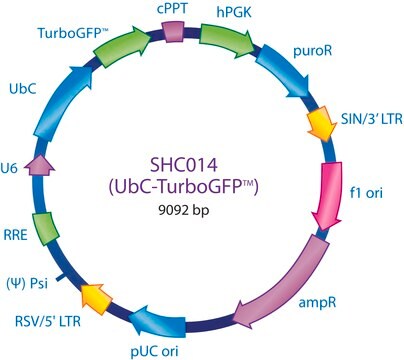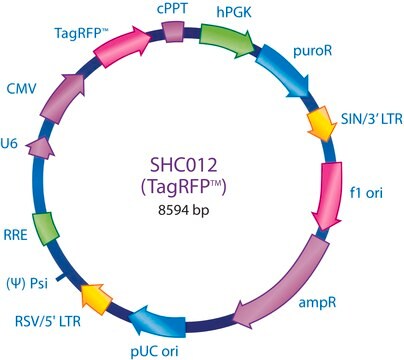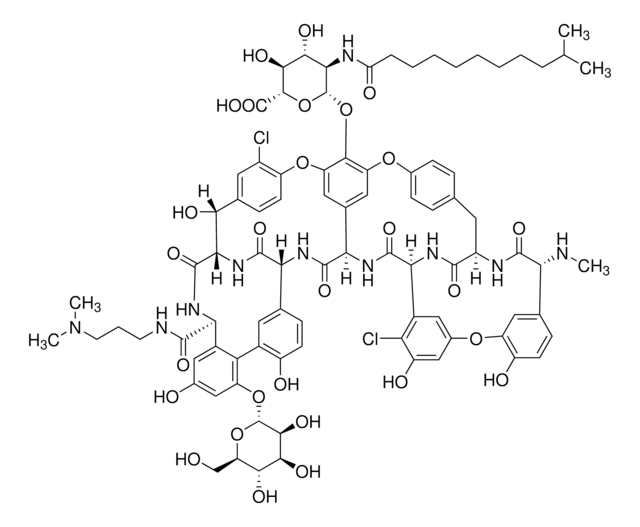SHC012V
MISSION® pLKO.1-puro-CMV-TagRFP™ Positive Control Transduction Particles
Contains a gene encoding TagRFP
Sinónimos:
MISSION®, MISSION® Control Transduction Particles
About This Item
Productos recomendados
Quality Level
product line
MISSION®
concentration
≥1x106 VP/ml (via p24 assay)
technique(s)
capture ELISA: 106 TU/mL using p24
shipped in
dry ice
storage temp.
−70°C
¿Está buscando productos similares? Visita Guía de comparación de productos
Categorías relacionadas
General description
To see more application data, protocols, vector maps visit sigma.com/shrna.
Application
This construct aids in interpretation of experimental design and results by providing a red fluorescent protein marker for monitoring success in transduction of your cells of interest.
Legal Information
Optional
Storage Class
12 - Non Combustible Liquids
wgk_germany
WGK 3
flash_point_f
Not applicable
flash_point_c
Not applicable
Elija entre una de las versiones más recientes:
Certificados de análisis (COA)
¿No ve la versión correcta?
Si necesita una versión concreta, puede buscar un certificado específico por el número de lote.
¿Ya tiene este producto?
Encuentre la documentación para los productos que ha comprado recientemente en la Biblioteca de documentos.
Global Trade Item Number
| Número de referencia del producto (SKU) | GTIN |
|---|---|
| SHC012V | 4061826600450 |
Nuestro equipo de científicos tiene experiencia en todas las áreas de investigación: Ciencias de la vida, Ciencia de los materiales, Síntesis química, Cromatografía, Analítica y muchas otras.
Póngase en contacto con el Servicio técnico






